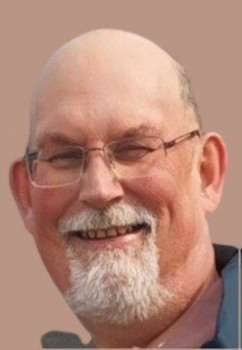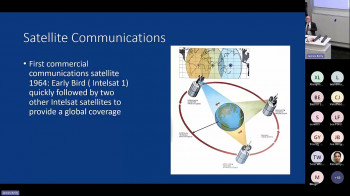News
Antennas in Advanced Applications: Horizon Watching with a 50-year Perspective
Centre for Electronics13 March 2024
The Centre for Electronics and the Antennas & EM Research Group at QMUL were pleased and privileged to host a seminar by Prof Anthony Brown looking 50 years back on Antennas & EM research for various applications that shaped the world of wireless and satellite communication as we know them today. Tony also provided a 50-year look ahead perspective on how new technologies and concepts would revolutionise the work of wireless communications.
Seminar Summary
Which areas in antennas will have a significant impact in 50-years' time? For that matter what was happening 50-years ago that influences what we do today? Although sometimes considered a niche technology, antennas are now ubiquitous and a key part of wireless technologies. Increased emphasis on, for example, energy efficiency, environmental sustainability and spectrum utilization makes their design even more important. In some ways antenna requirements are heavily influenced by both societal and application needs. On the other hand disruptive technologies lead us down new pathways for their usage. So what can the past tell us about the future in our technology?
This lecture is a personal perspective, looking both forwards and back. Ultimately, some of the exciting areas in antennas (and related technologies) that we work on today will impact how we interact with each other, gather information about both our immediate environment and the broader universe around us, and help ensure a secure future for us and our planet.
In looking back over the last 50 years this lecture addresses the roots of some of the approaches that we use today but also some "dead ends" in technology that might yet find new life. The talk is presented in three linked themes: 1) applications and their growing needs, 2) enabling technologies, and 3) antenna systems. I will be concentrating on electrically large antennas, while recognising both the important and exciting evolution of small structures.
Throughout this journey, we will touch on electromagnetics simulation, materials technology and manufacturing techniques, and how these may be applied to the different types of antennas including electronic beam forming (e.g. phased arrays), shaped reflector, and hybrid antennas.
The lecture is designed for anyone interested in antennas and radiating systems and I very much hope this will include early career researchers as well as those of us with more than 50 years' experience!
Biography
Professor Anthony Brown is an internationally recognized antenna expert currently working in radio astronomy, radar and communications. He started work in 1974, having graduated with a BSc in Physics. Employed by the Marconi Research Laboratories at Great Baddow, Essex, UK, his first project was a 14.5m Ku band beam waveguide fed satellite earth station installed at Goonhilly Downs in the UK. He then contributed to satellite antennas for maritime communication and also had his first experience of phased array radar, developing an X-band portable system in 1976. Tony moved to Standard Telecommunication Laboratories (STL) in Harlow, Essex then a UK research laboratory of ITT (USA). Here he was involved with advanced antenna designs for radar, communications and navigation. He contributed to early digital beamformer arrays (1979) as well as one of the first GPS systems in the UK and next generation frequency scanning arrays. Moving to the University of Surrey in 1980 he continued his work on microstrip array antennas gaining his PhD in 1983. Much spare time was also spent on UOSAT1, the first University of Surrey satellite and a precursor of today's microsatellites. He then moved to Racal Antennas Ltd as Chief Engineer, designing and building antennas for military and civil communications. He was a member of the ARINC 741 standards committee on satellite to aircraft communications and worked on what would become the first Vodafone cellular radio system. Leaving Racal in 1987 he co-founded Easat Antennas Ltd, later becoming Easat Radar Systems, and now a leading supplier of Air Traffic Control (ATC) and coastal radar. Having served as Managing Director and Company Chairman, Tony accepted a Chair position at the University of Manchester (UMIST) in 2003, whilst maintaining his position in Easat on a part time basis. Inside the University he continued his research in radar and antennas more generally. He worked on large phased arrays for Radio Astronomy principally for the Square Kilometre Array (SKA). In radar, he became interested principally in the impact of wind turbines on radar surveillance systems, a subject he has published widely on. He also worked on indoor propagation and antennas especially for ultra-wide band systems (UWB). He retired from University of Manchester in 2018 becoming Professor Emeritus there. He joined Queen Mary, University of London on a part time basis in 2019. He maintains a long-term research collaboration with the University of Cambridge (where he was formerly a visiting academic) on wide band phased arrays and is part time CTO in Easat Radar Systems Ltd. Today his research still centres on large phased arrays and associated electromagnetic simulation both in radio astronomy and for satellite use.
Email: j.kelly@qmul.ac.uk
Updated by: David Lockwood






